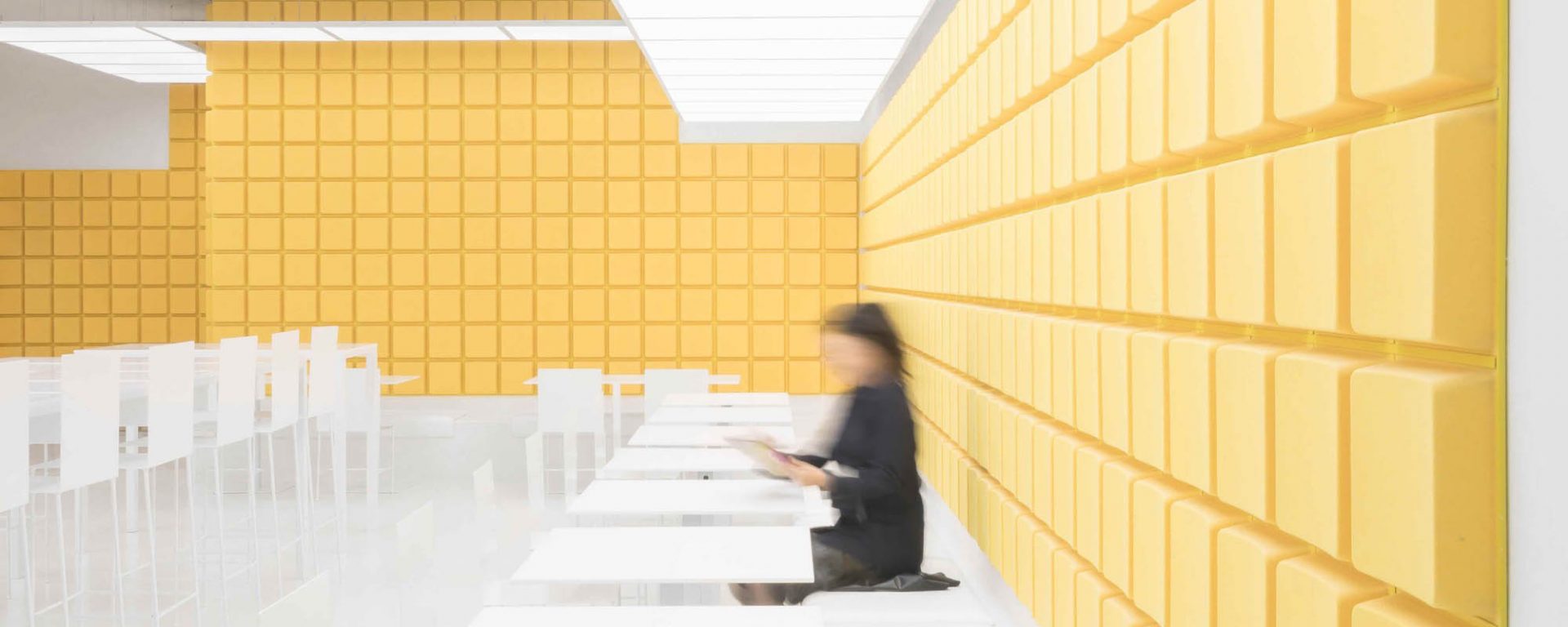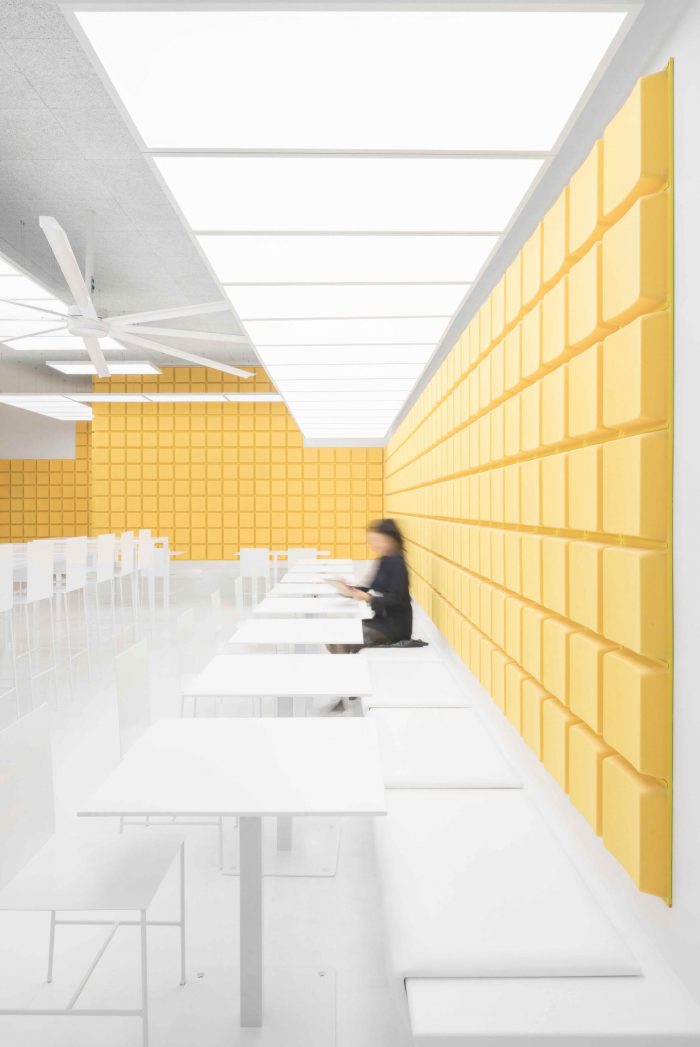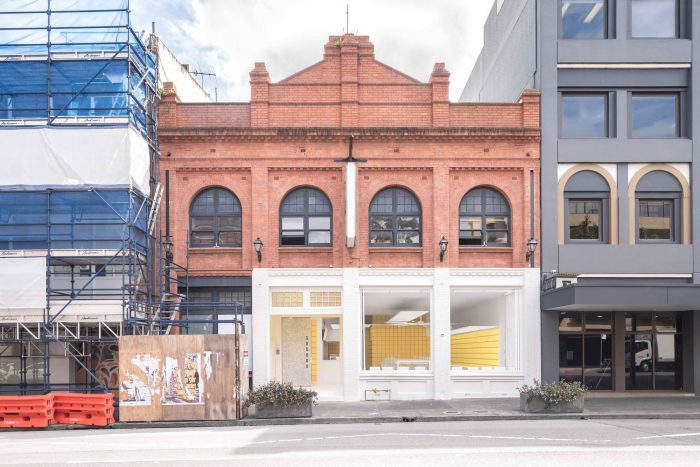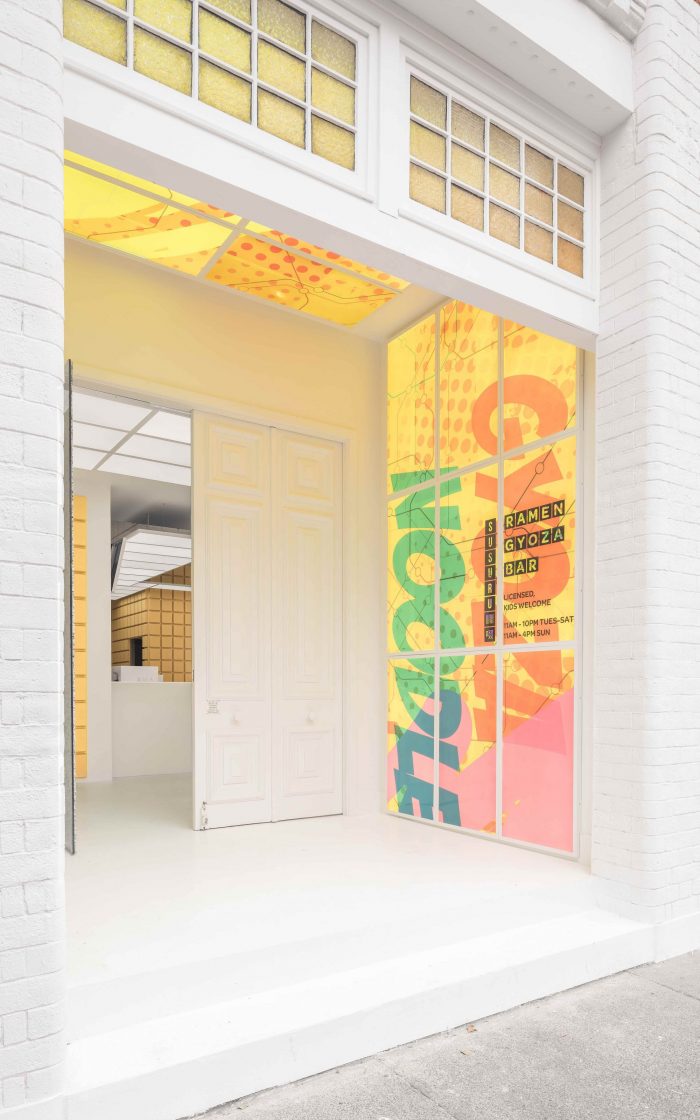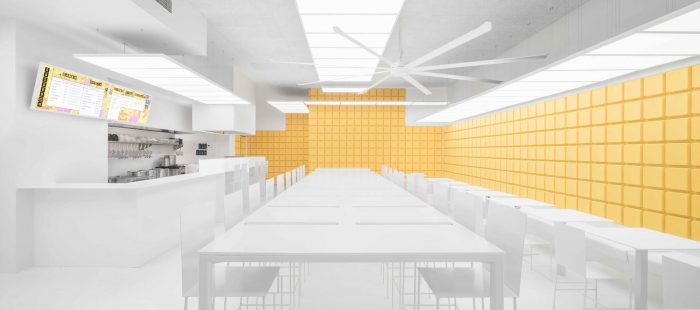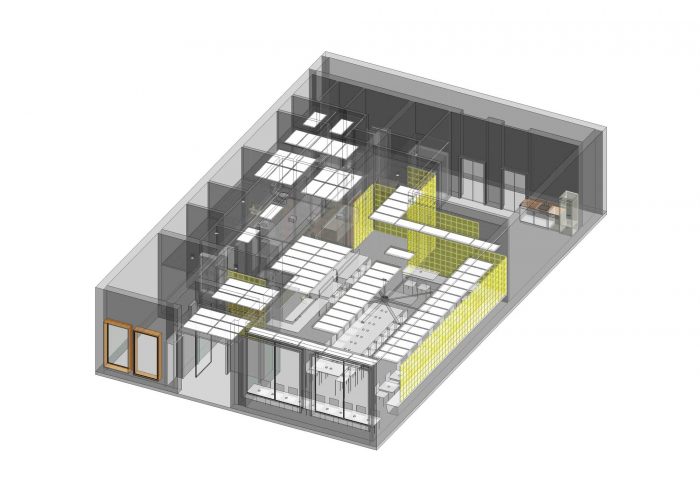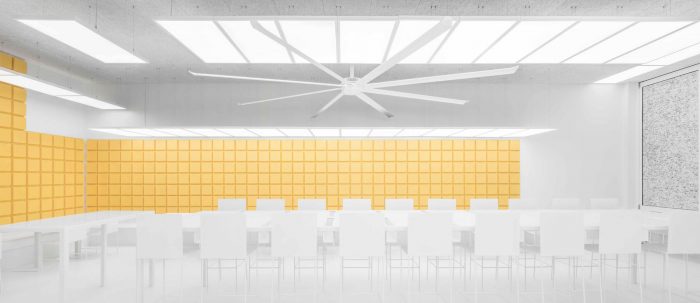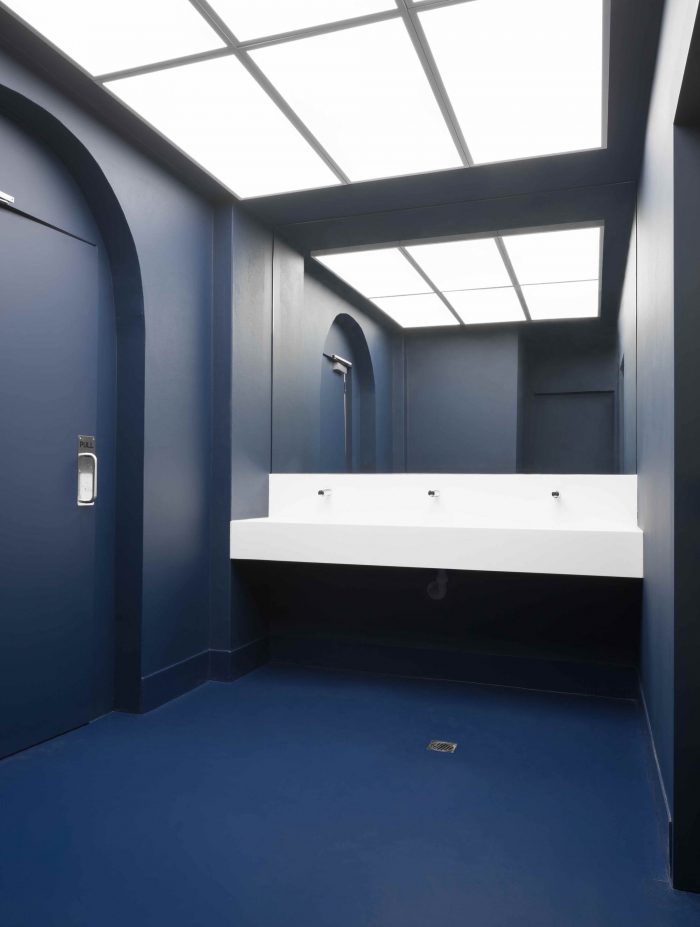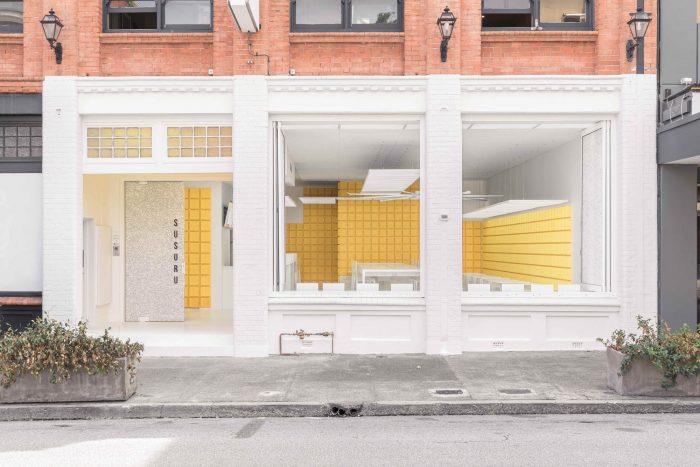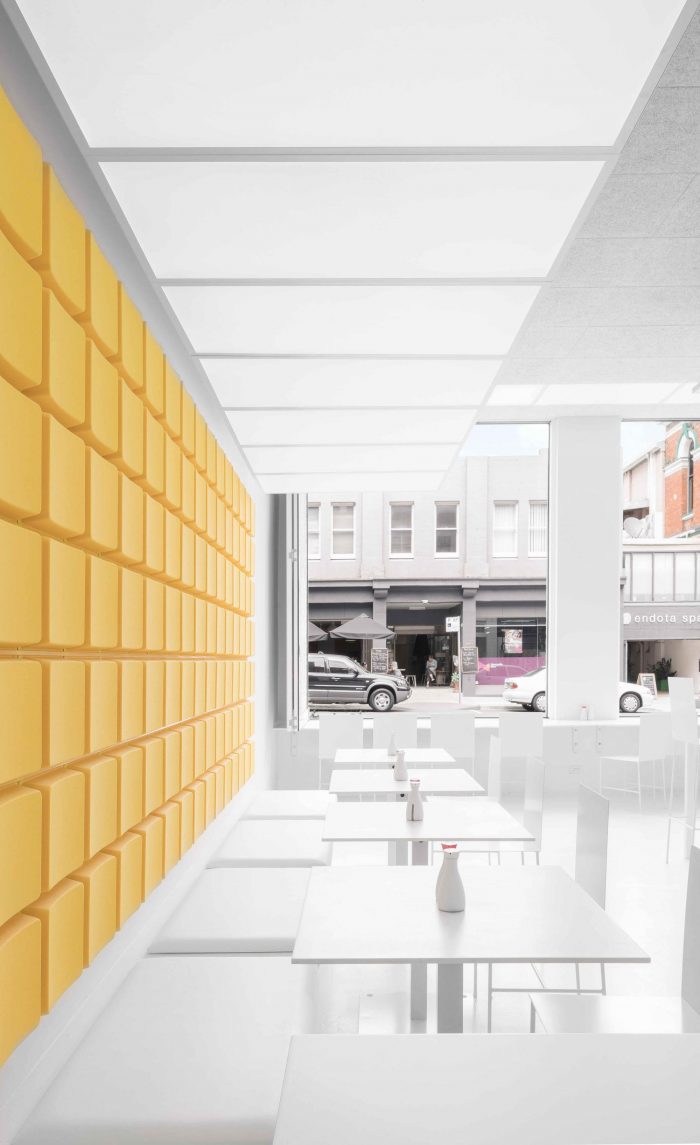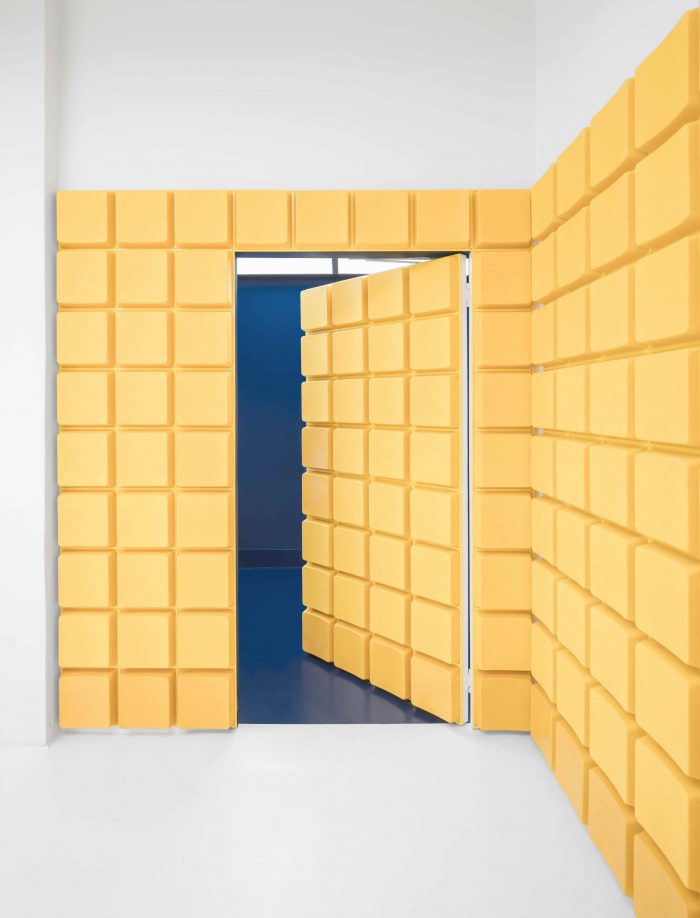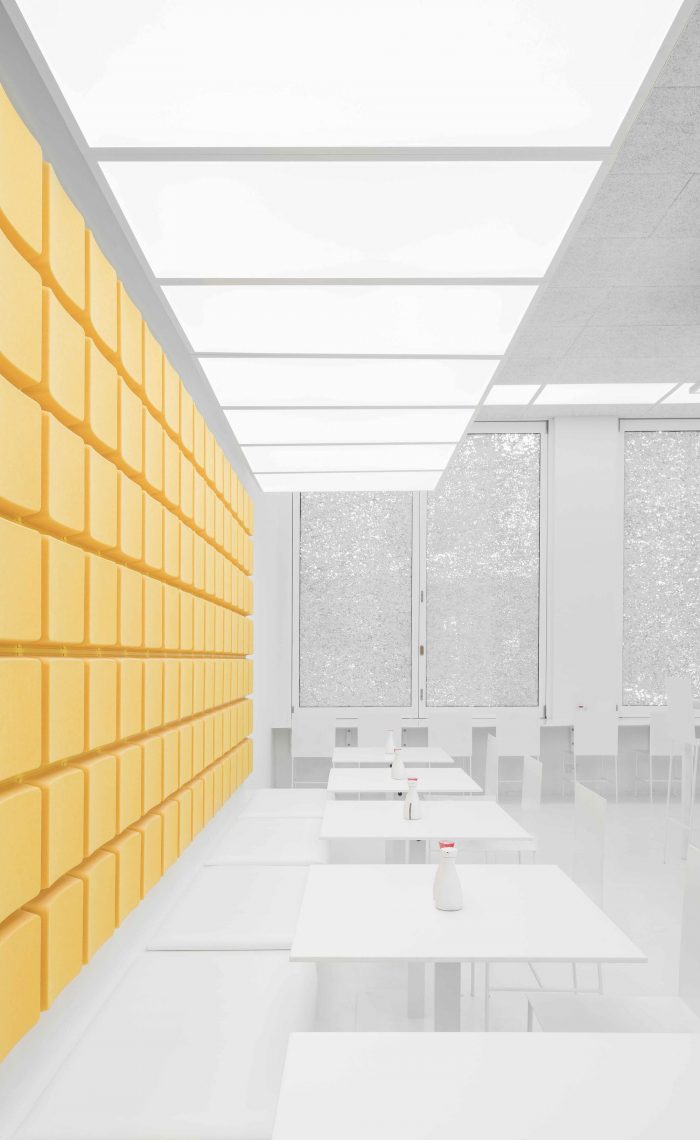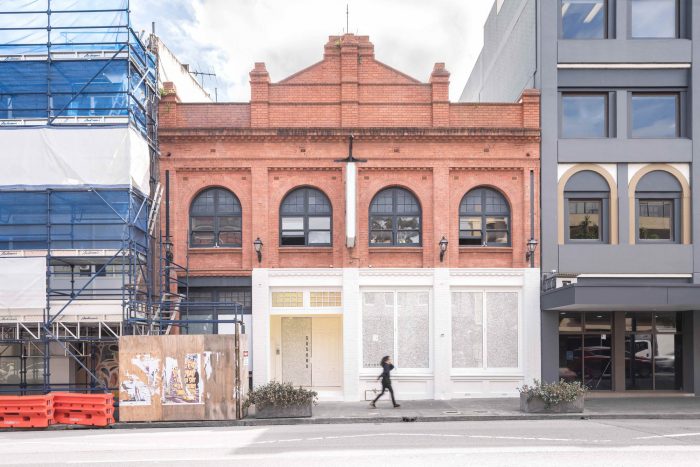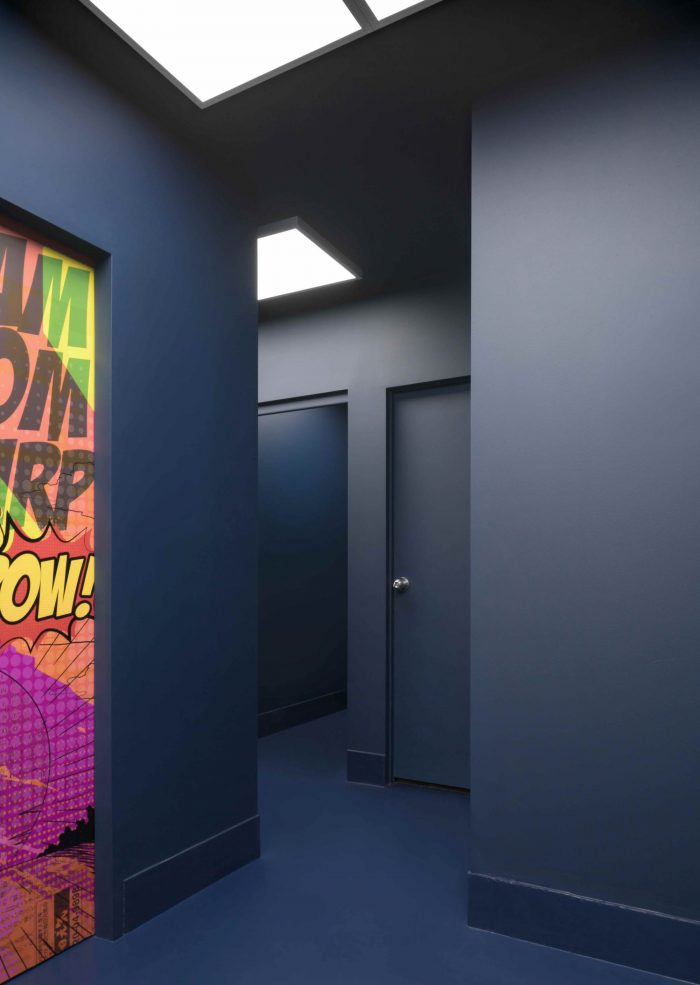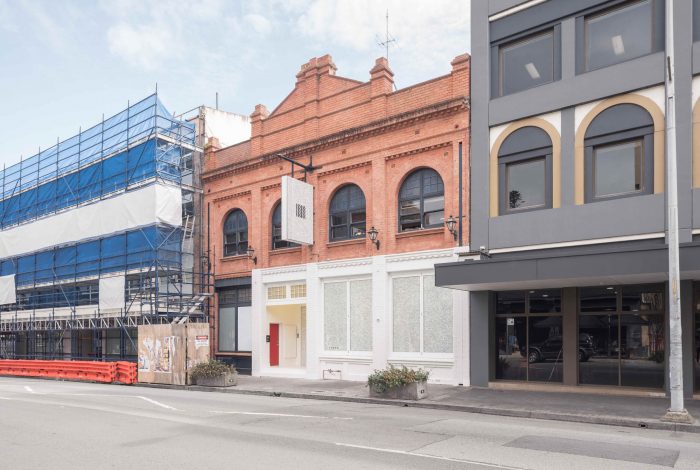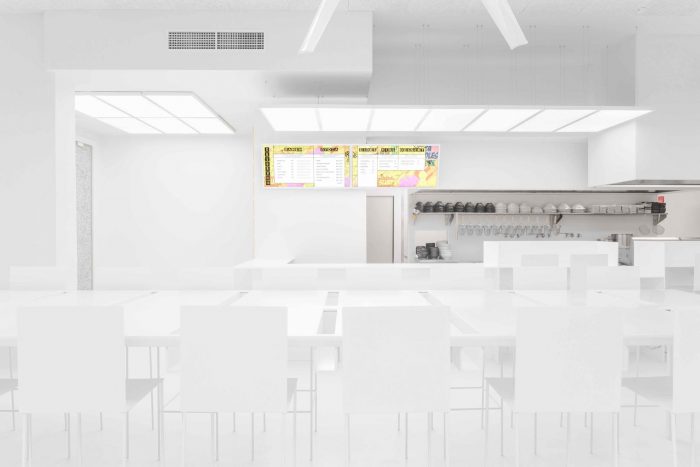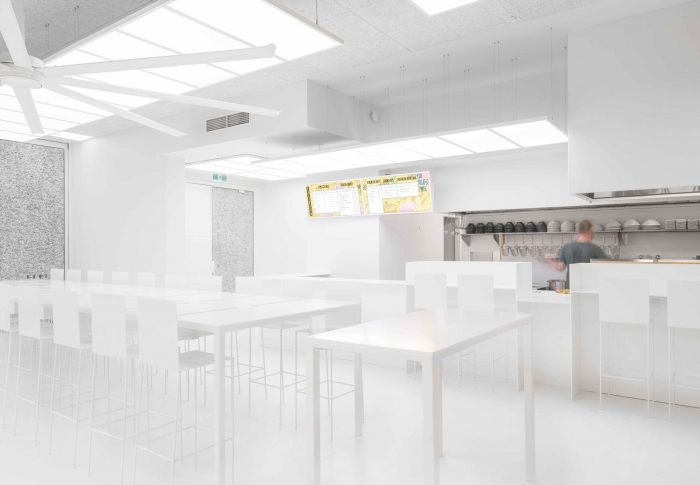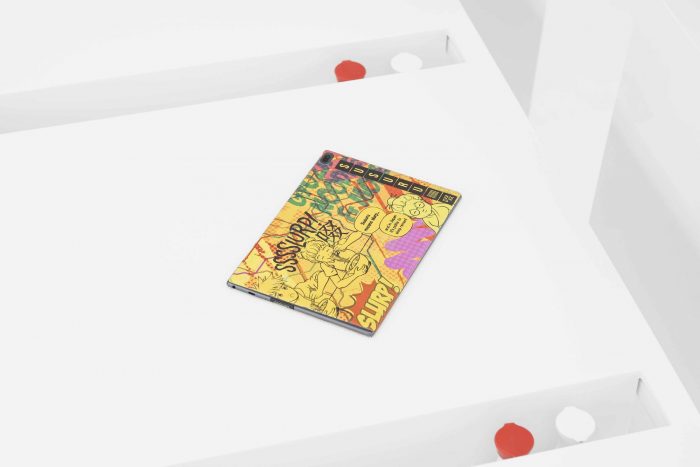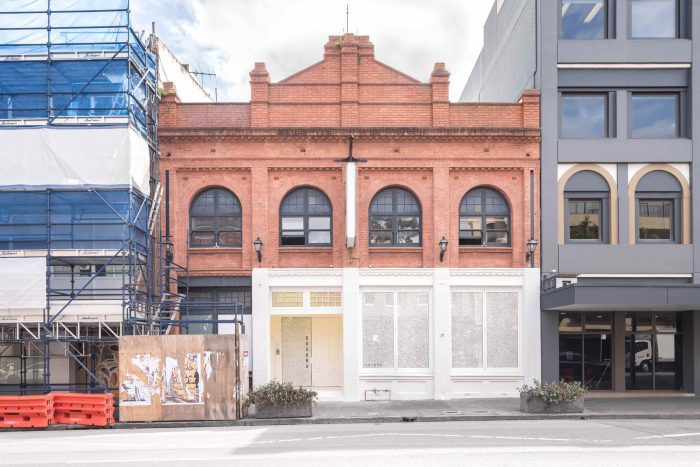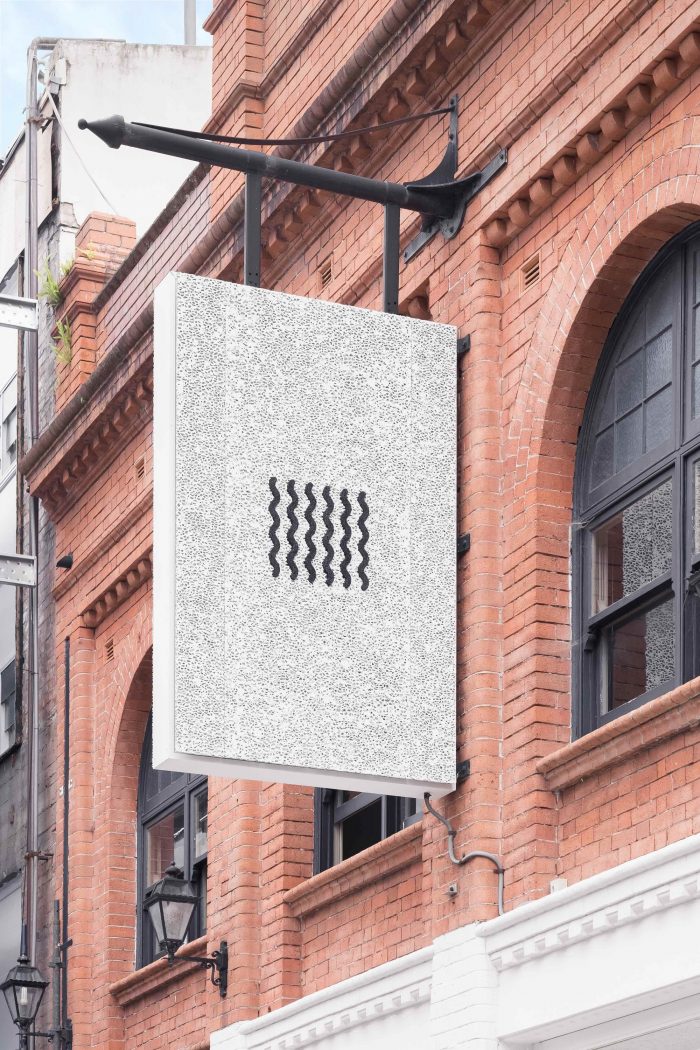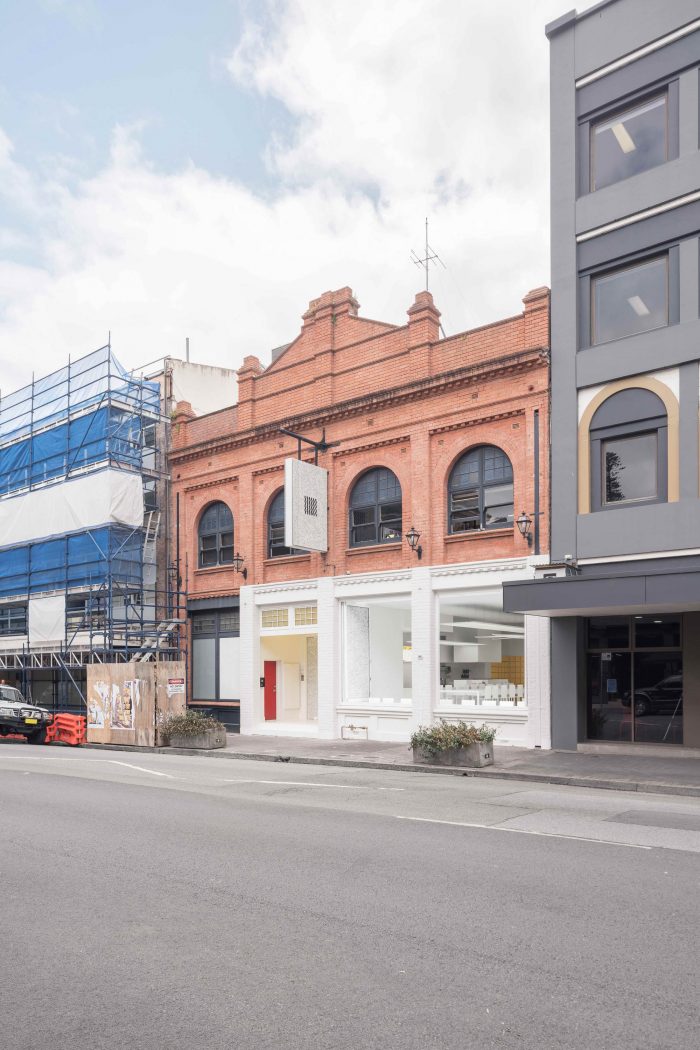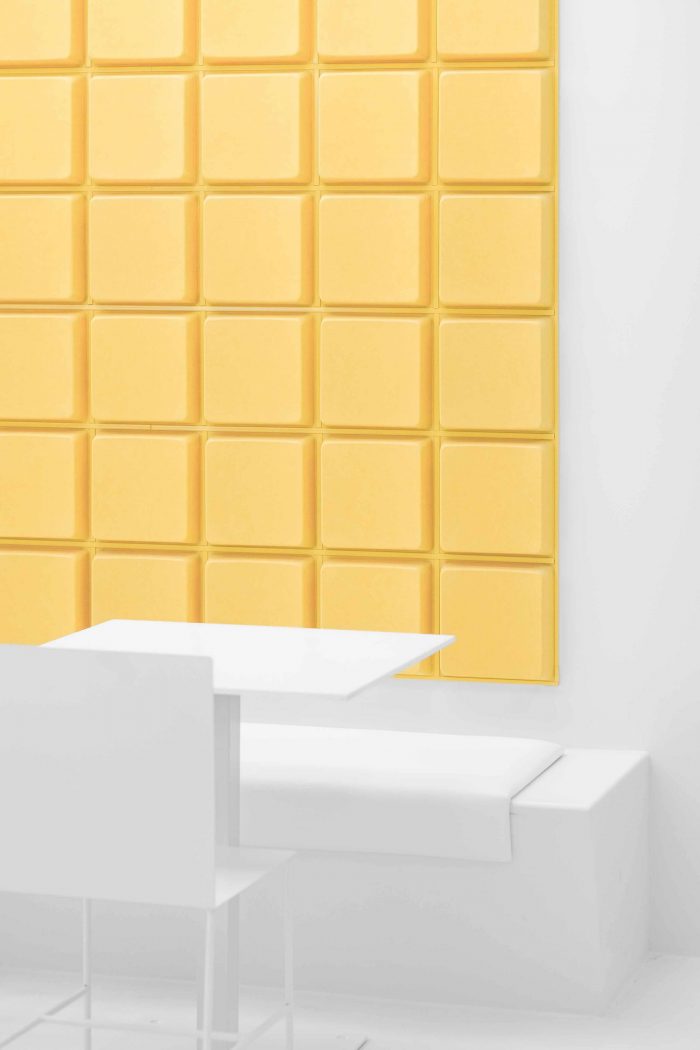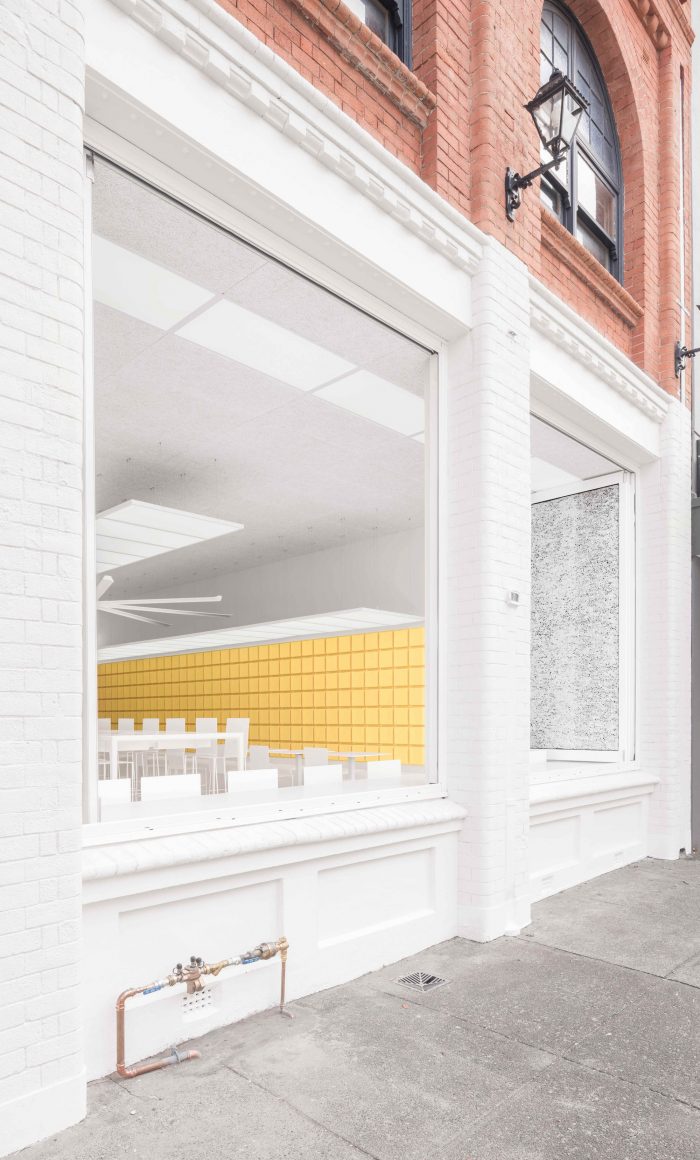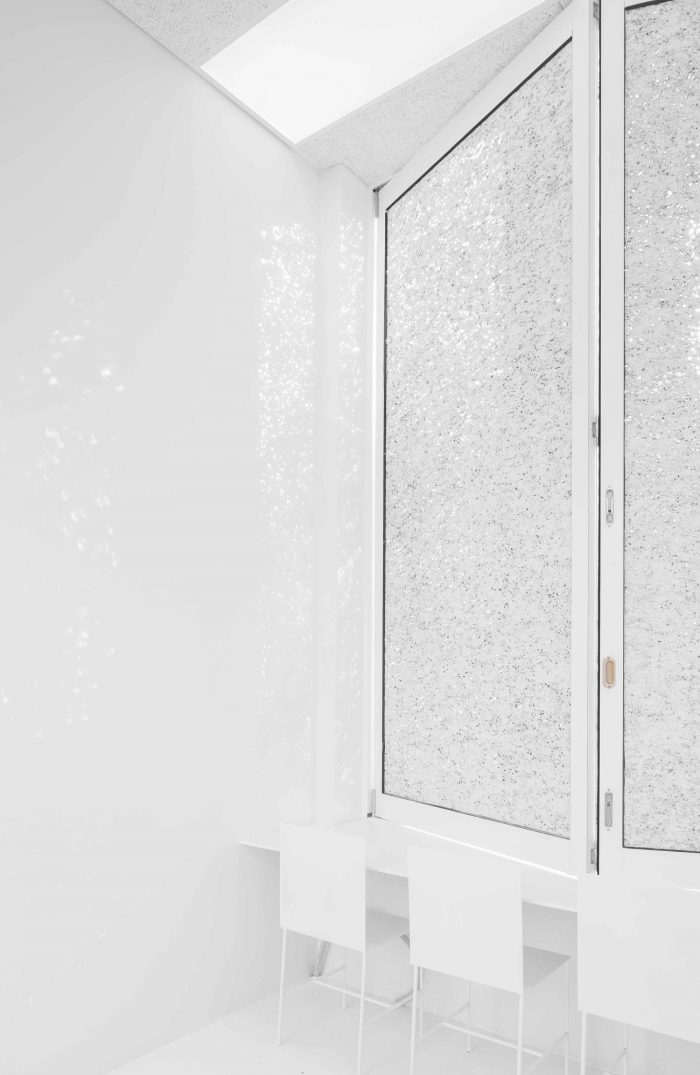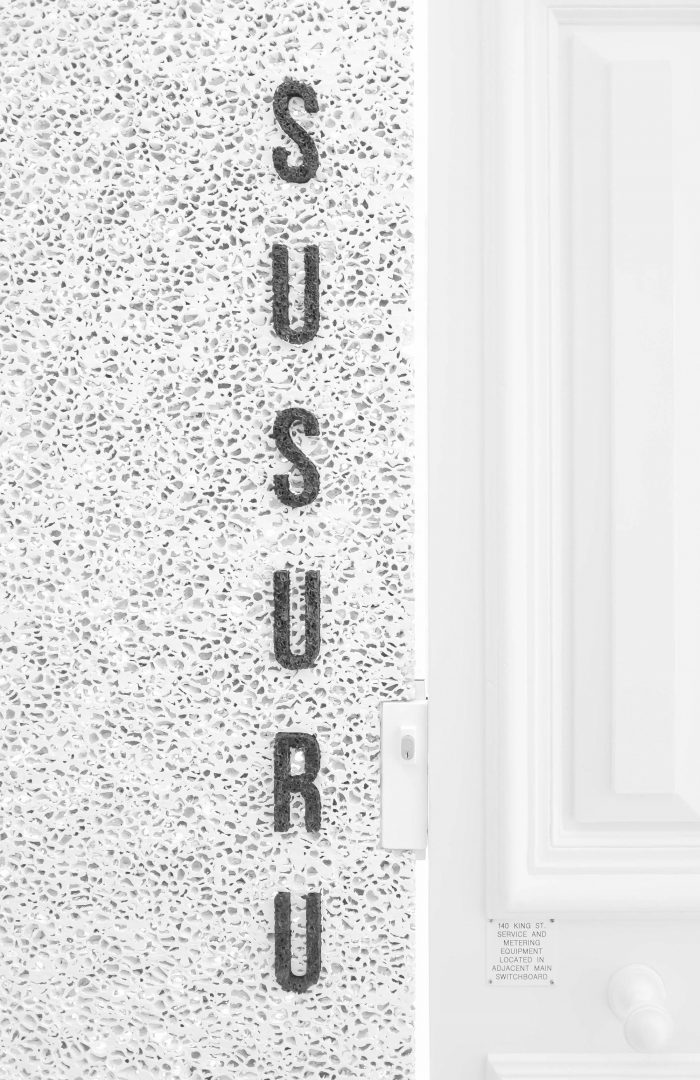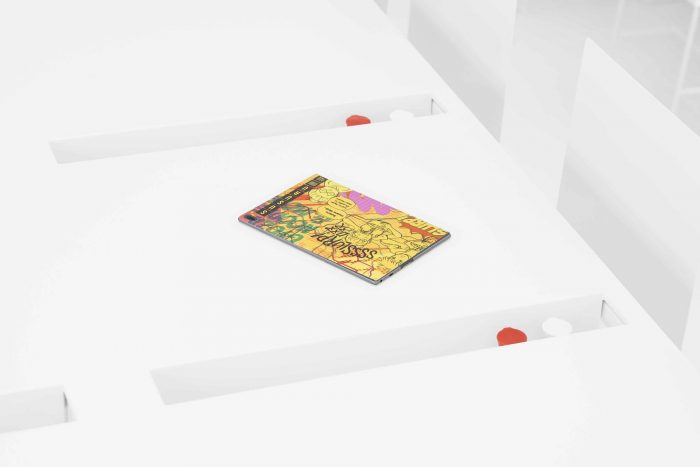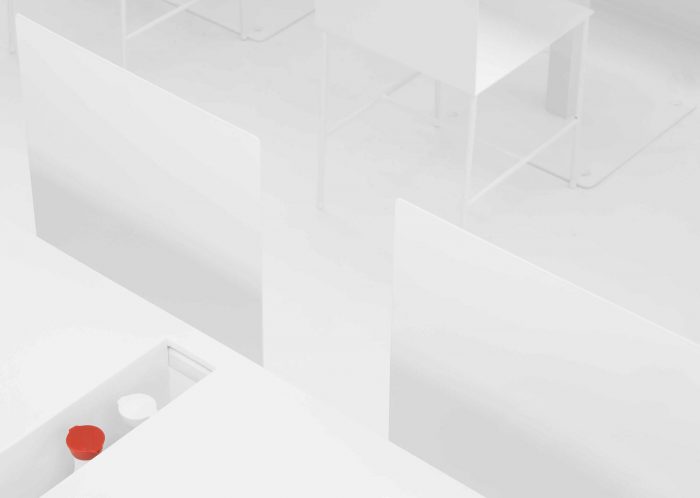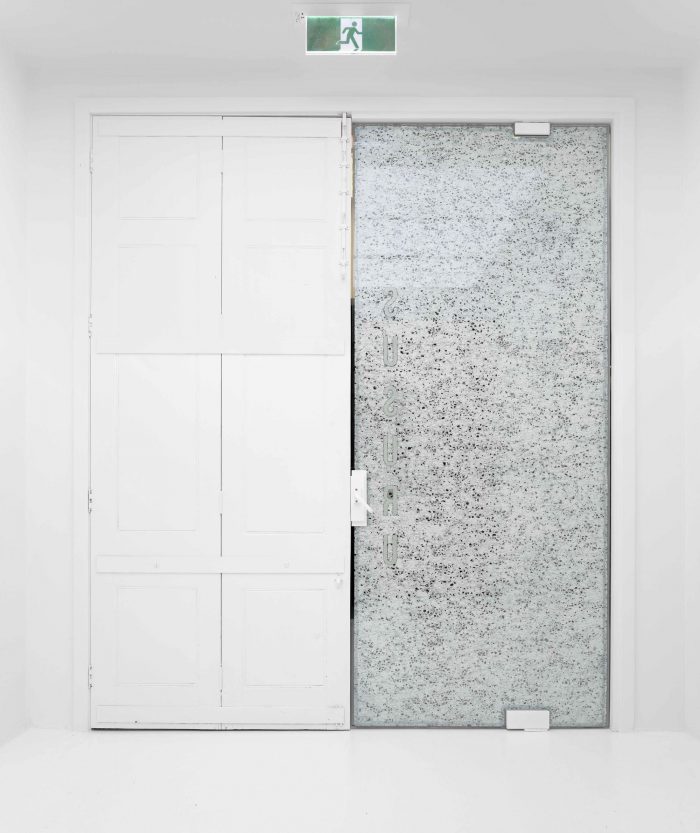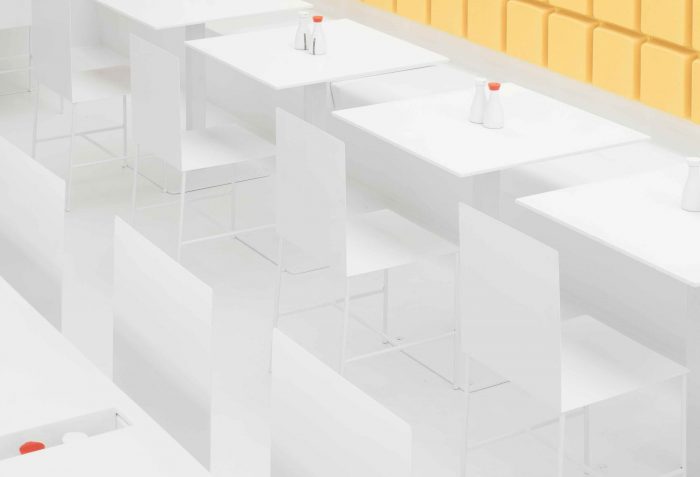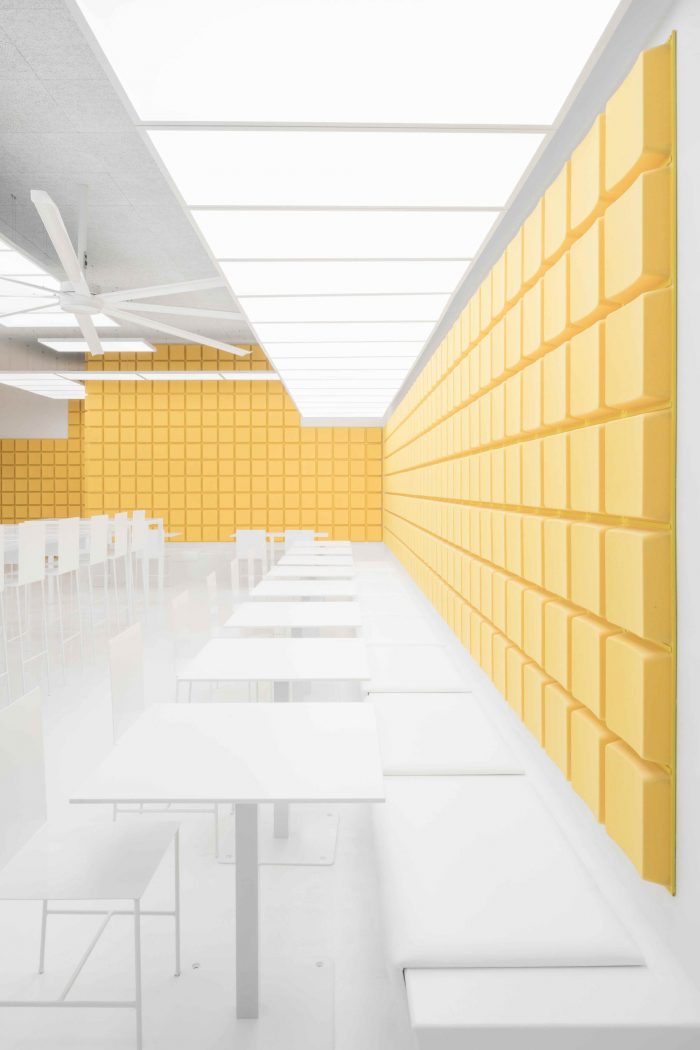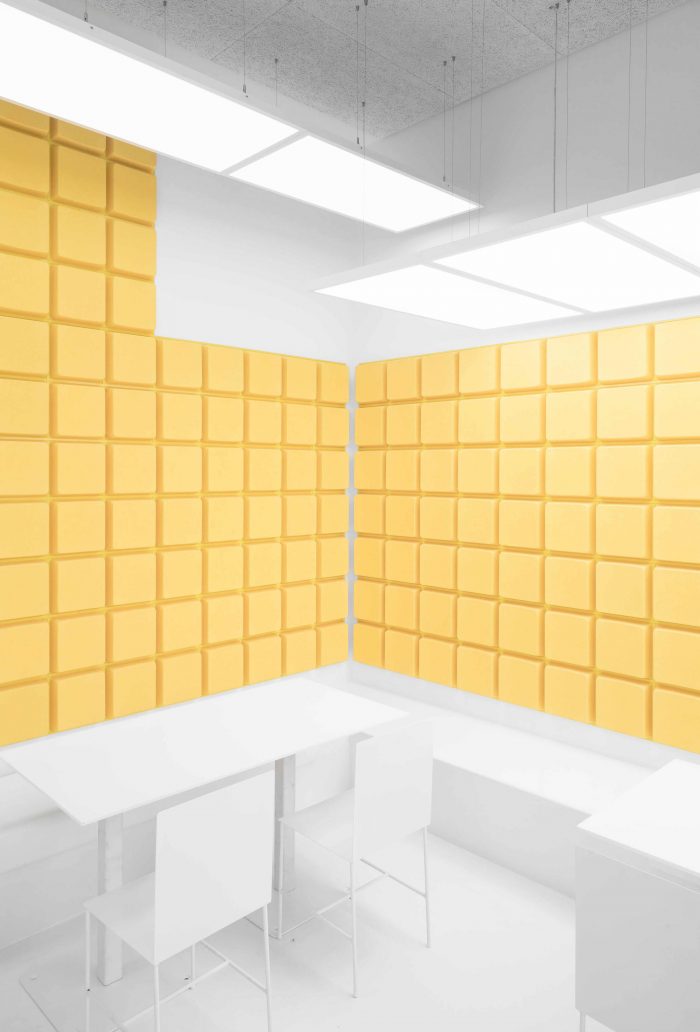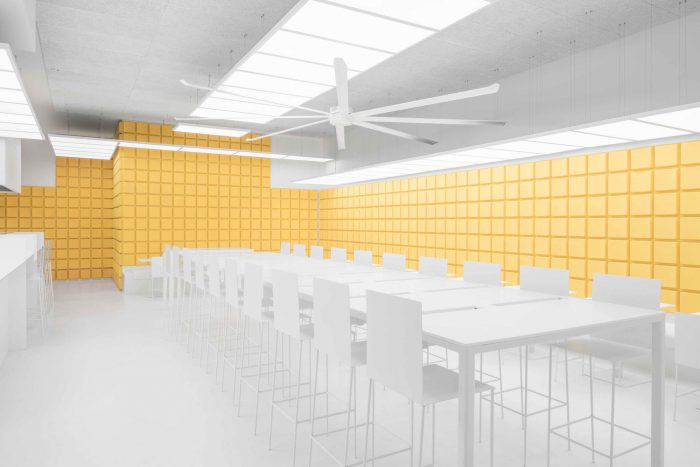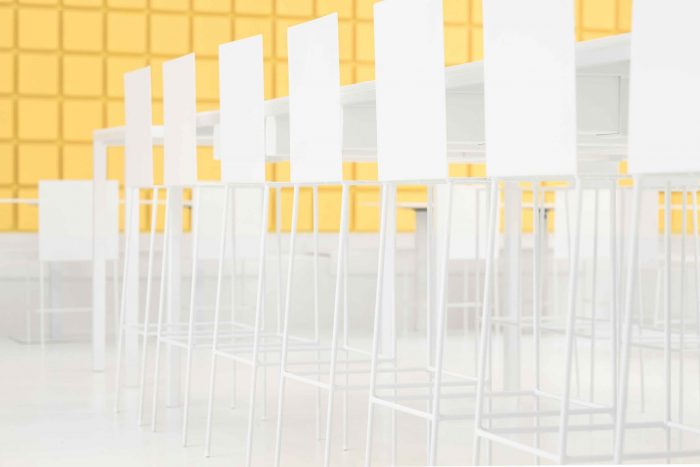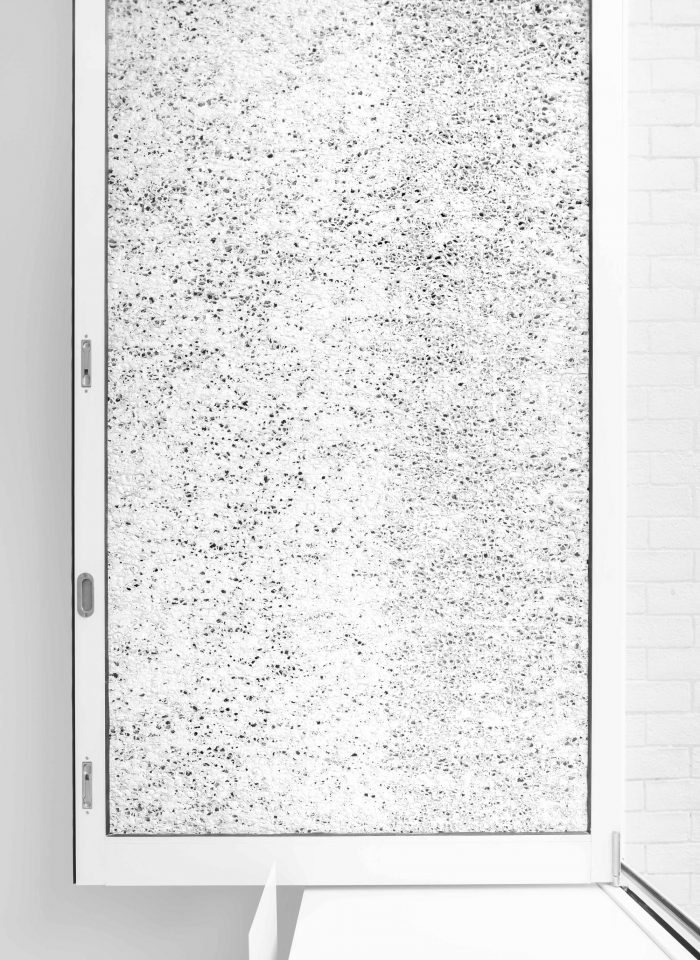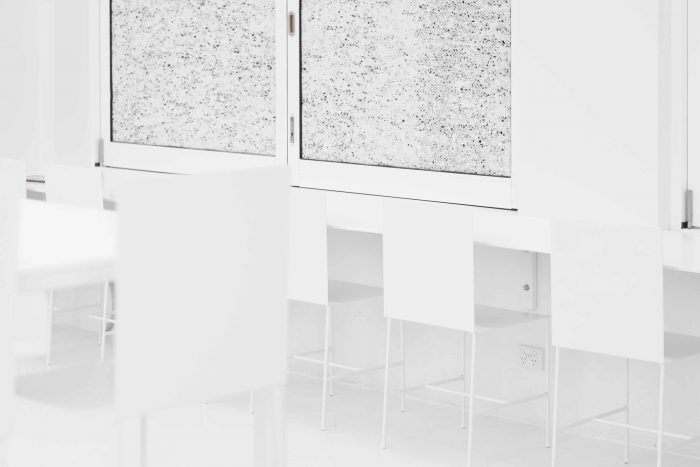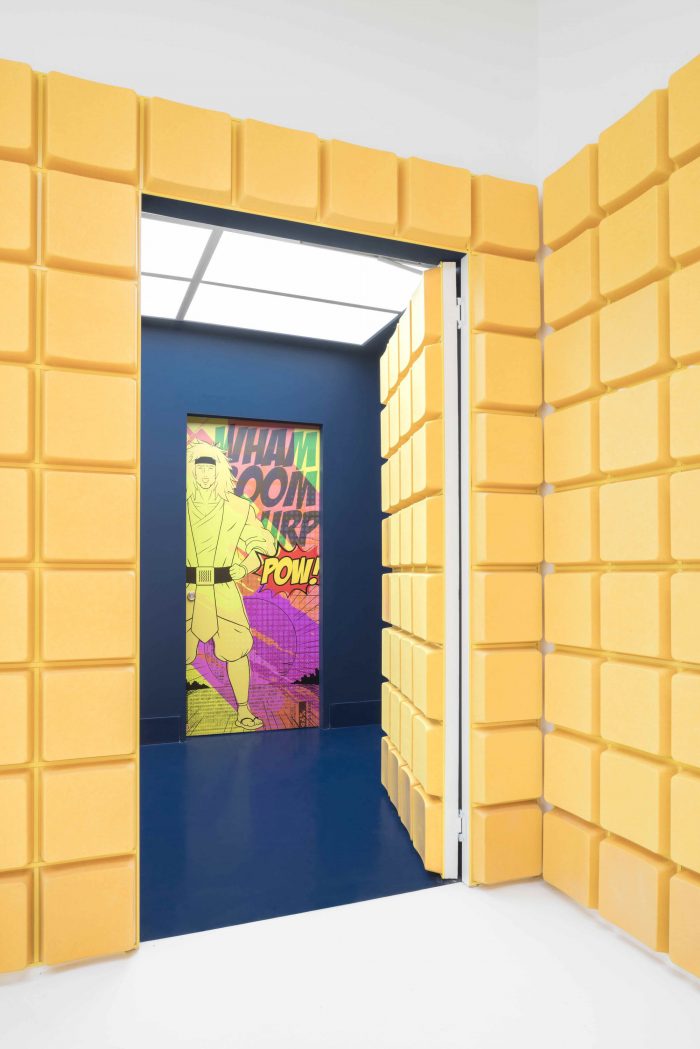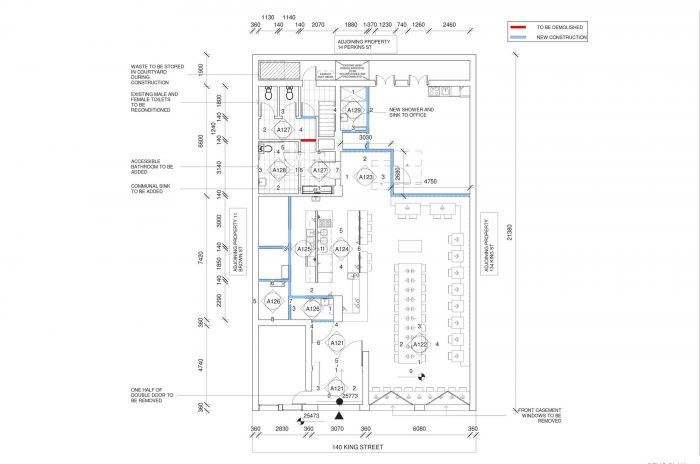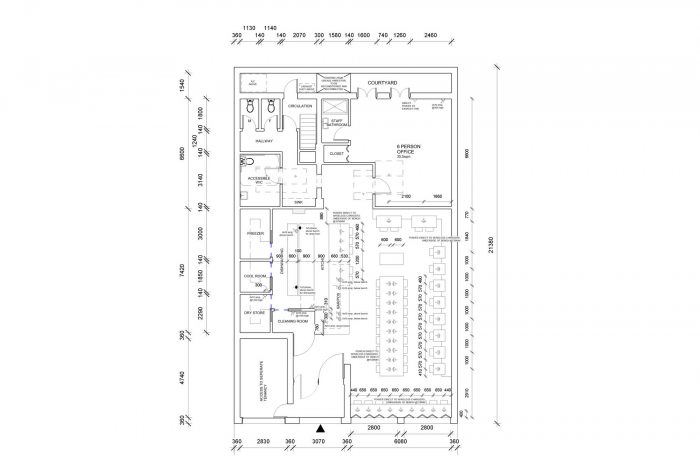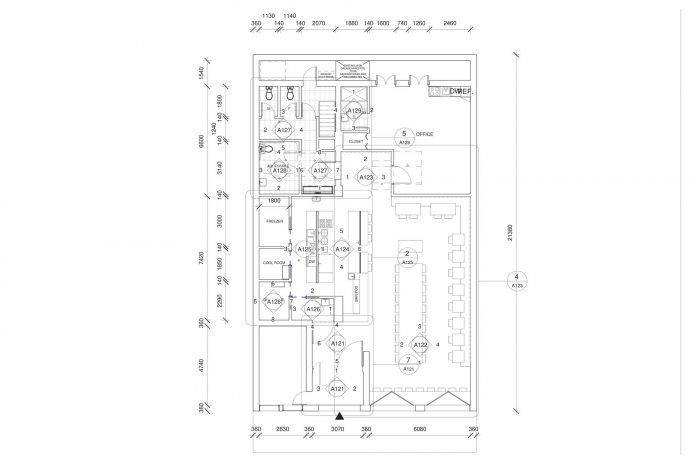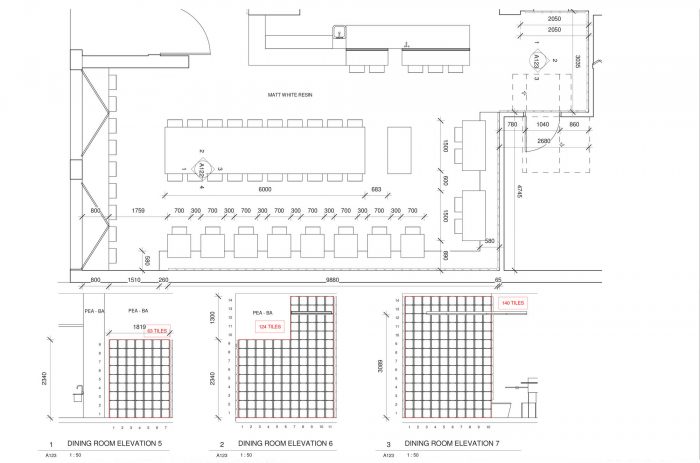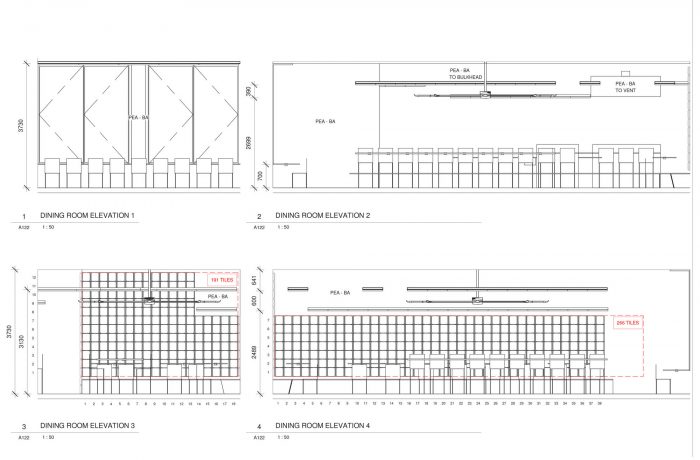坐落在一栋1906年的著名建筑中,SUSURU拉面和饺子店使它的外墙和街道变得生动起来。通过与市议会的紧密合作,该设计打破了该地区典型的传统采矿美学。随着城市的成长和发展,它吸引了更多的外国关注,他们不一定与多年前主要是一个矿业城市有相同的默契。苏苏鲁餐厅是为新来者、来访者,以及最重要的是为那些希望看到城市发展和多样化的长期居民而设。
Situated in a prominent building from 1906, SUSURU Ramen and Gyoza bar enlivens the façade and street it rests on. Working closely with the City Council, the design breaks away from the traditional mining aesthetic typical of the area. As the city grows and develops, it attracts more foreign attention, whom don’t necessarily have the same rapport with what was largely a mining town many years ago. The SUSURU restaurant is for the newcomers, for those visiting, and most importantly, for those long term residents wanting to see the city develop and diversify.
随着一种新的和外国的食物类型被引入这个城市,在这个设计中提供了一些完全新鲜的机会。从东京地铁站和火车的设计中得到启发,一个以白色为主的室内空间成为黄色亮点的背景,这是品牌的标志。在这个基础上,我们加入了临时的图形设计元素、菜单板、标牌、平板电脑盖和门,以增加焦点并吸引注意力。这些元素按季节循环使用,就像广告为地铁站和火车车厢增添活力一样。
With the introduction of a new and foreign food type to the city, opportunity was afforded in this design for something completely fresh. Taking cues from Tokyo metro station and train design, a predominantly white interior acts as a backdrop to a yellow highlight, a signifier of the brand. To this base, we add in temporary graphic design elements, menu boards, signage, tablet covers and doors that are made to add focal points and to draw attention. These elements are cycled seasonally, much like advertisements adding life to the metro stations and train carriages.
作为建筑师,我们监督了这个项目,从构思、品牌发展到产品和材料采购、项目管理、营销和广告以及订购系统的用户体验(UX)界面设计。这让我们完全控制了整个过程,与Gesamtkunstwerk的性质类似。
As the architects, we oversaw the project from idea conception, brand development through to product and material sourcing, project management, marketing and advertising and User Experience (UX) interface design of the ordering systems. This gave us complete control over the entire process, similar in nature to Gesamtkunstwerk.
在可能的情况下,我们使用了当地的制造商,特别是为了重新活跃城市的金属工业,我们设计了家具,而不是采矿的设备。可以批量采购的重复性产品则从中国的大型工厂进口。
Where we could, local fabricators were used, particularly to re-liven the metal industry in the city, with designs for furniture, as apposed to equipment for mining. Repetitive products that could be sourced in bulk were imported from larger factories in China.
迄今为止,该市的反应似乎是前所未有的,被描述为 “纽卡斯尔城市化(最终)”,是 “2049年可信的未来的前奏”,并类似于 “在神奇宝贝漫画小说中绘制的医院咖啡馆可能的样子”。
The response thus far from the city seems unprecedented, described as “Newcastle Urbanisation (finally)”, as a “prelude to the plausible future of 2049”, and resembles “what a hospital cafe might look like when drawn in a Pokémon graphic novel.”
Architects: Prevalent
Area: 250 m²
Year: 2017
Photographs: Jan Vranovsky
Manufacturers: Alusion, Colorbo, F&C Glass Aluminium, Hunter Valley Benchtops, Imagiron
Architect In Charge:Ben Berwick
Primary Builder:Pete Haas
City:Newcastle
Country:Australia

